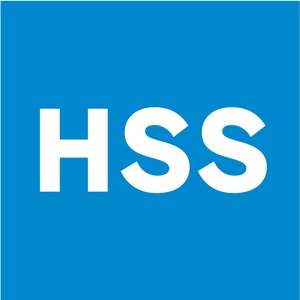NEW YORK, Sept. 21, 2022 /PRNewswire/ -- A new study measuring the incidence of injury and illness among runners in the New York City Marathon and the association of injuries with training patterns was recently published in the British Journal of Sports Medicine by sports medicine physicians and experts at Hospital for Special Surgery (HSS). The researchers found that runners who avoided rapid increases in weekly mileage were less likely to become injured during the lead-up to the event. This was demonstrated regardless of whether the runners were newcomers to the sport or experienced racers.
For the study, sports medicine physician and lead author Brett G. Toresdahl, MD, Research Director for the Primary Sports Medicine Service at HSS, and his colleagues partnered with Strava to monitor the training habits of 735 men and women who trained for the 2019 New York City Marathon. Of those, 699 (95.1 percent) started the 26.2-mile race and 692 finished the event. Over 16 weeks of training, 40 percent of runners in the study reported an injury, of which 30 (4.1 percent) were serious enough to prevent participation in the marathon. Another 12 runners (16 percent) suffered injuries during or immediately after the race.
To assess the effects of training rates on the risk of injury, the researchers used a measure called the acute:chronic workload ratio (ACWR), which compares how much training a person does in a short amount of time to their training over a longer period. Athletes in many other sports, such as rugby and soccer, use the ACWR to track and modify their workouts so that they can optimize their training and performance.
An ACWR above 1.5 means the weekly mileage in the past week was 50 percent higher than the average weekly mileage over the past 28 days. Runners who reported an injury during the first four weeks of training spent more days with an ACWR ≥1.5 than uninjured runners (P=0.009). The researchers also found that when controlling for age, sex, body mass index, and running experience, the number of days when the ACWR ≥1.5 was associated with injury (logistic regression odds ratio 1.06, P=0.002).
"We now have a more robust understanding of the health of runners of the New York City Marathon – including their backgrounds, training patterns, if and when they became injured or ill, and the various ways that their training patterns were associated with injury," said Dr. Toresdahl. "We hope these insights will motivate runners to avoid rapid increases in training volume that we found were associated with injury."
The study also found that a frequently used guide for increasing training doesn't appear to protect against injury in preparation for a marathon. Historically, runners have used the '10 percent rule,' which advises against upping weekly running mileage by more than 10 percent over the previous week. The HSS researchers however did not observe a link between exceeding the 10 percent rule and more injuries, and the perception that novice and older runners are at higher risk for injury is not true – the risk of injury was the same among all runners, despite their age, sex, body mass index, experience level, or goal finishing times.
Strenuous exercise has been associated with changes in the immune system, which might in turn leave athletes more prone to infectious illnesses. The study found that 27.2 percent of runners reported falling ill during training, mostly with upper respiratory infections and gastrointestinal complaints. While these runners experienced interruptions in training by an illness, it was rare for an illness to prevent a runner from participating in the race.
"The results reinforce the importance of smart training – running consistently, increasing mileage slowly, and being flexible with a plan when interruptions occur," Dr. Toresdahl said. "In the future, we hope to explore additional factors that may play a role in the development of injuries such as the effect of weather and altitude during marathon training."
HSS is the world's leading academic medical center focused on musculoskeletal health. At its core is Hospital for Special Surgery, nationally ranked No. 1 in orthopedics (for the 13th consecutive year), No. 3 in rheumatology by U.S. News & World Report (2022-2023), and the best pediatric orthopedic hospital in NY, NJ and CT by U.S. News & World Report "Best Children's Hospitals" list (2022-2023). In a survey of medical professionals in more than 20 countries by Newsweek, HSS is ranked world #1 in orthopedics for a second consecutive year (2022). Founded in 1863, the Hospital has the lowest complication and readmission rates in the nation for orthopedics, and among the lowest infection rates. HSS was the first in New York State to receive Magnet Recognition for Excellence in Nursing Service from the American Nurses Credentialing Center five consecutive times. An affiliate of Weill Cornell Medical College, HSS has a main campus in New York City and facilities in New Jersey, Connecticut and in the Long Island and Westchester County regions of New York State, as well as in Florida. In addition to patient care, HSS leads the field in research, innovation and education. The HSS Research Institute comprises 20 laboratories and 300 staff members focused on leading the advancement of musculoskeletal health through prevention of degeneration, tissue repair and tissue regeneration. The HSS Innovation Institute works to realize the potential of new drugs, therapeutics and devices. The HSS Education Institute is a trusted leader in advancing musculoskeletal knowledge and research for physicians, nurses, allied health professionals, academic trainees, and consumers in more than 145 countries. The institution is collaborating with medical centers and other organizations to advance the quality and value of musculoskeletal care and to make world-class HSS care more widely accessible nationally and internationally. www.hss.edu.
SOURCE Hospital for Special Surgery

WANT YOUR COMPANY'S NEWS FEATURED ON PRNEWSWIRE.COM?
Newsrooms &
Influencers
Digital Media
Outlets
Journalists
Opted In




Share this article